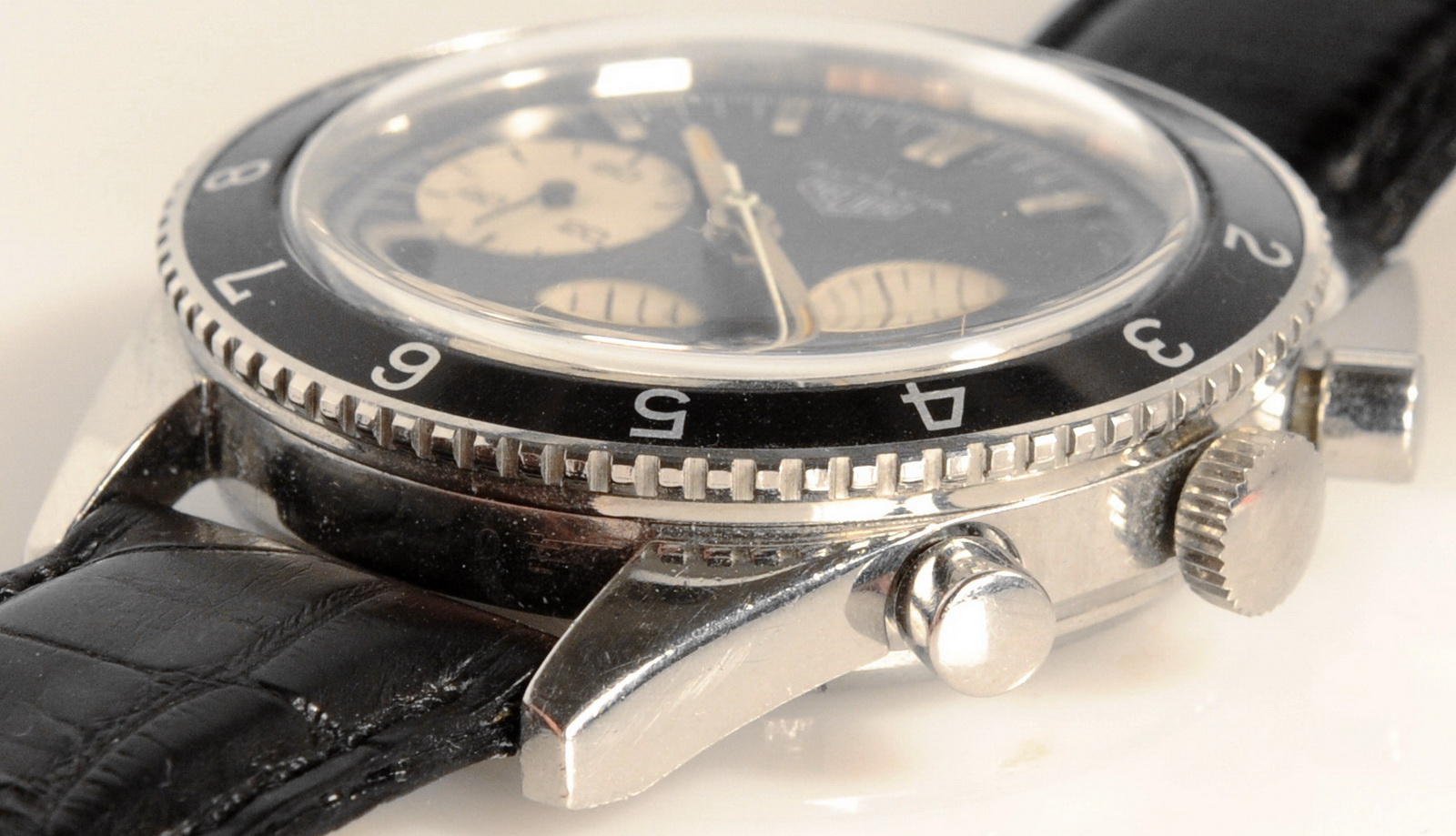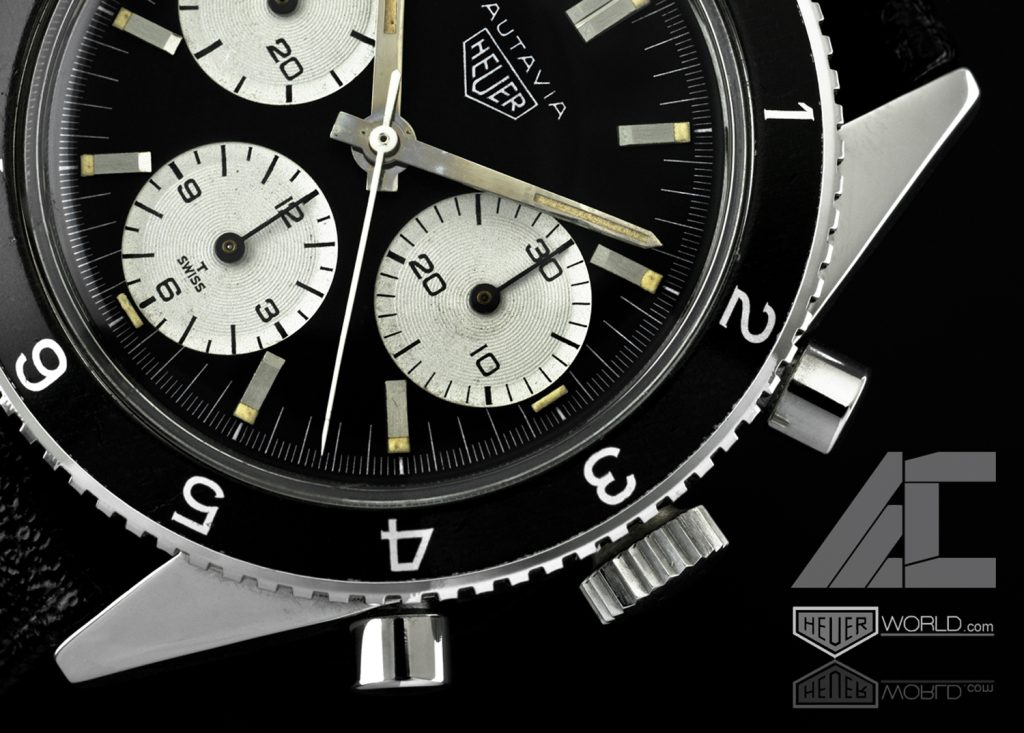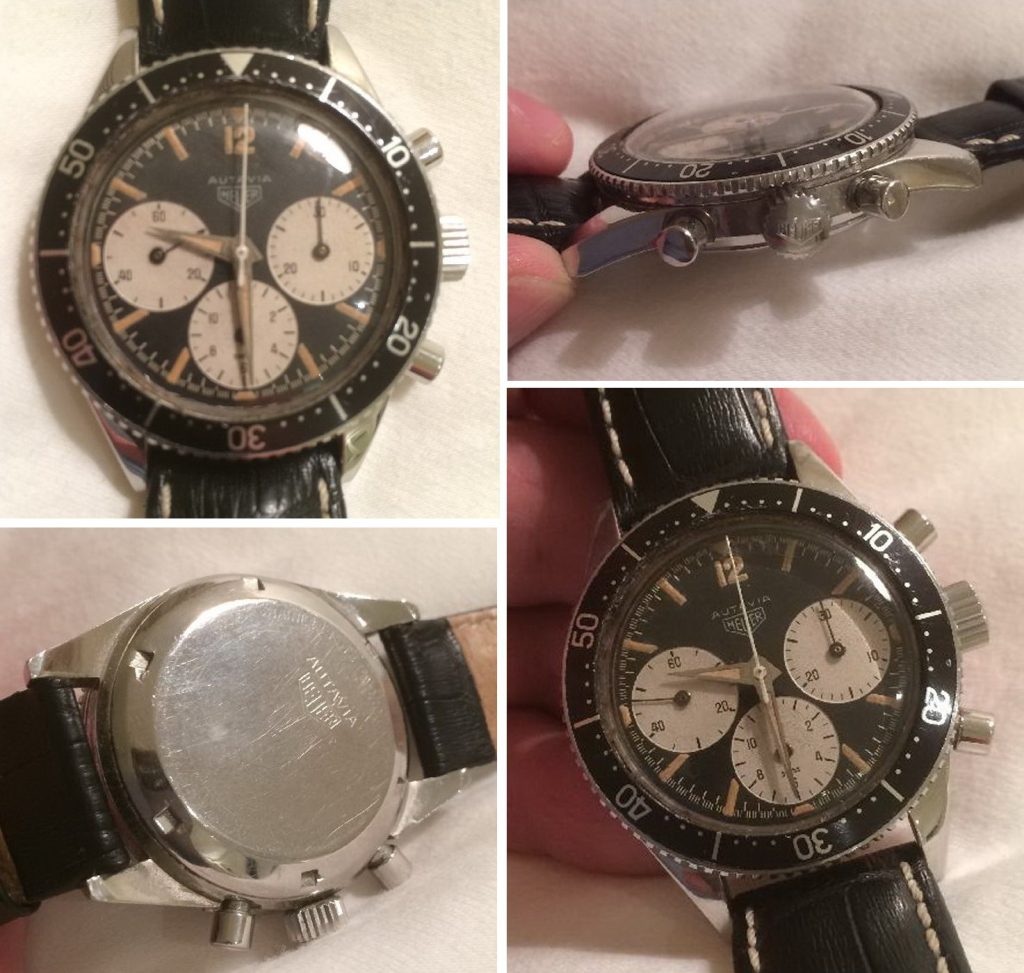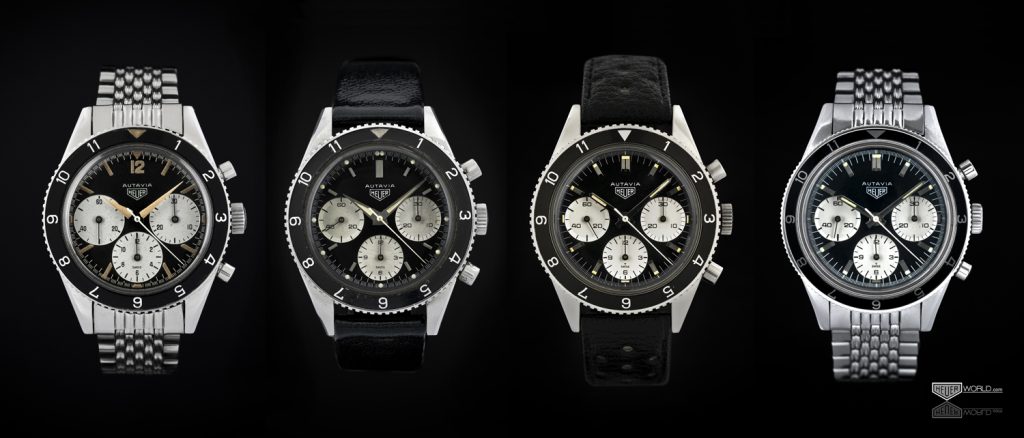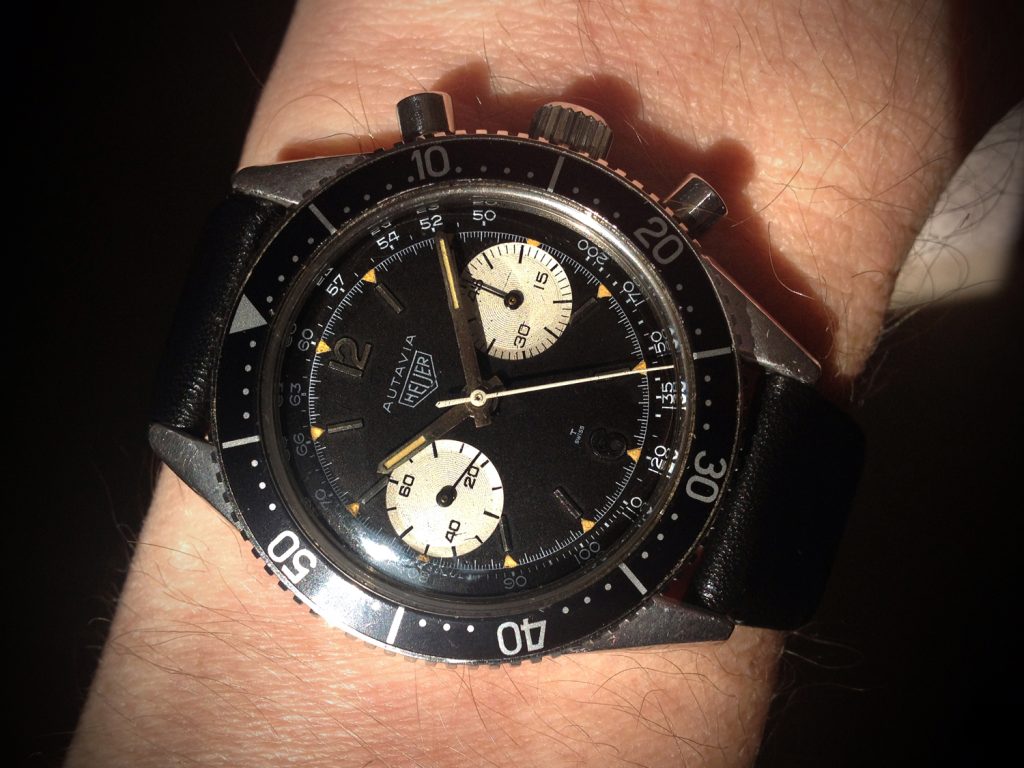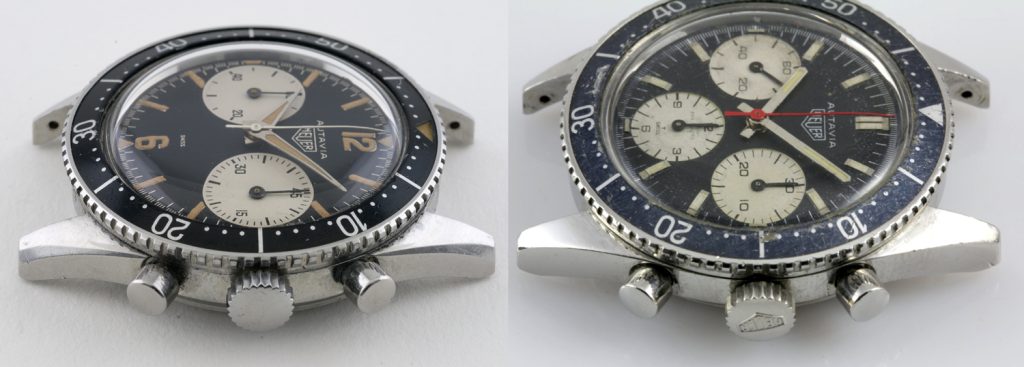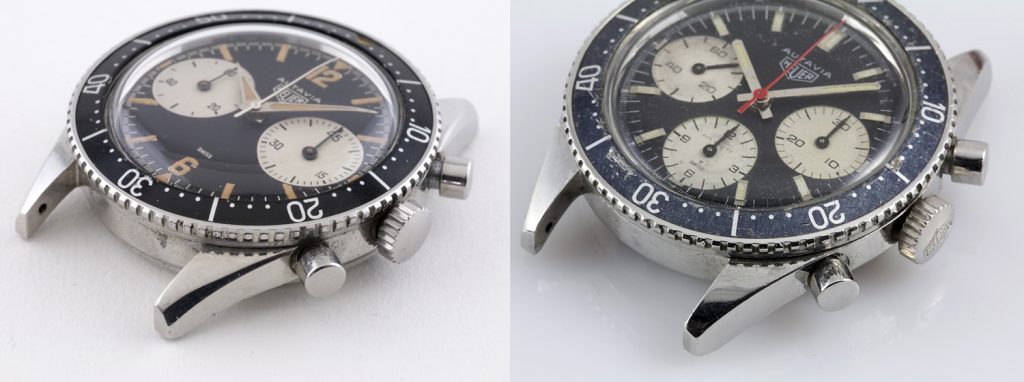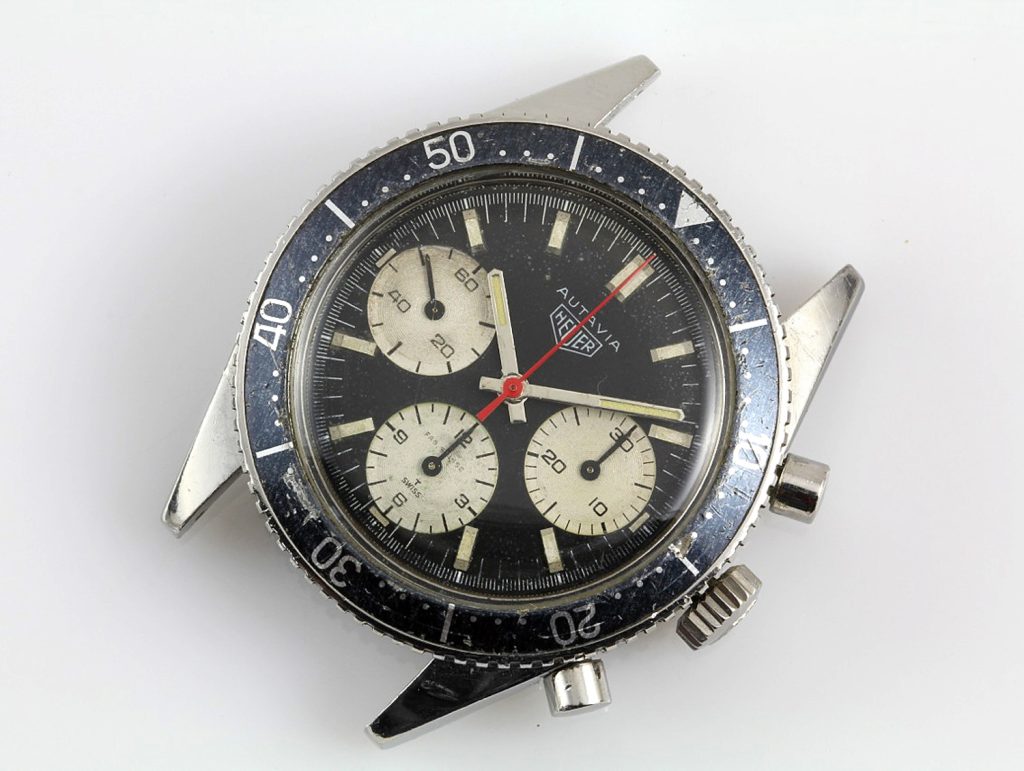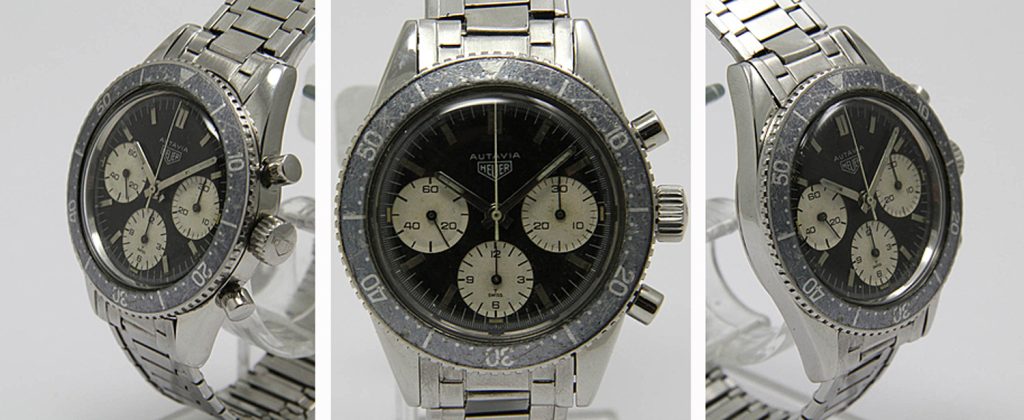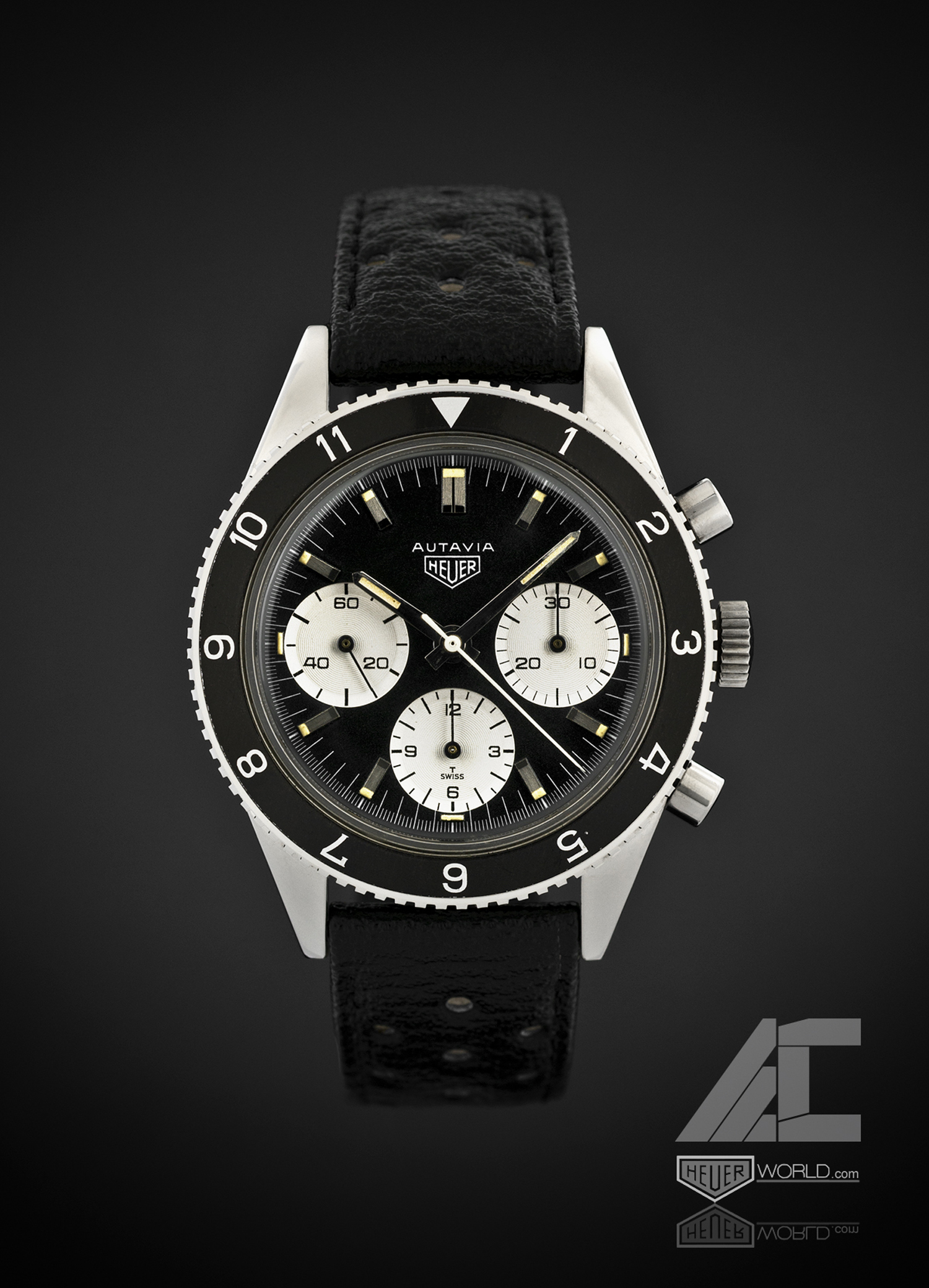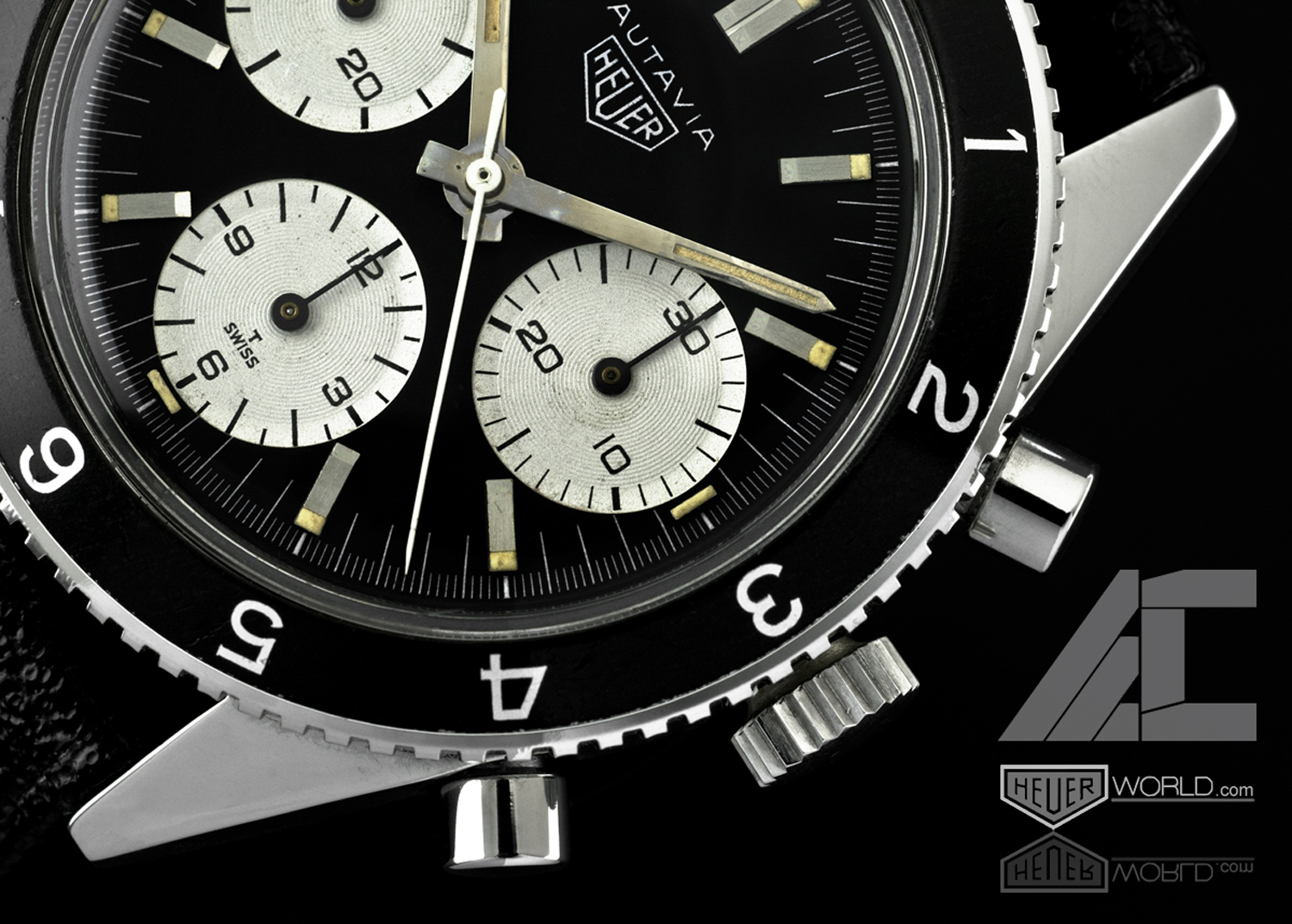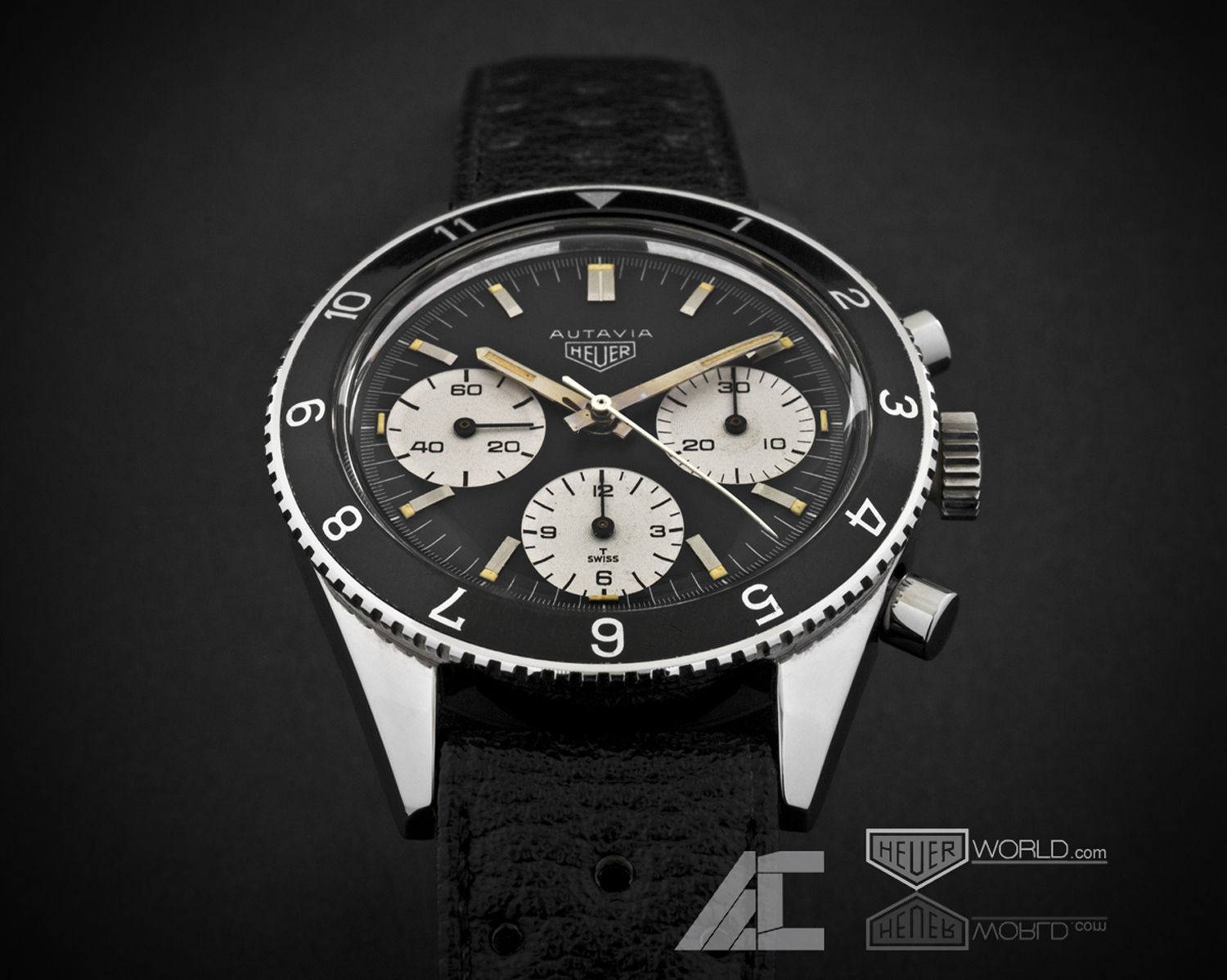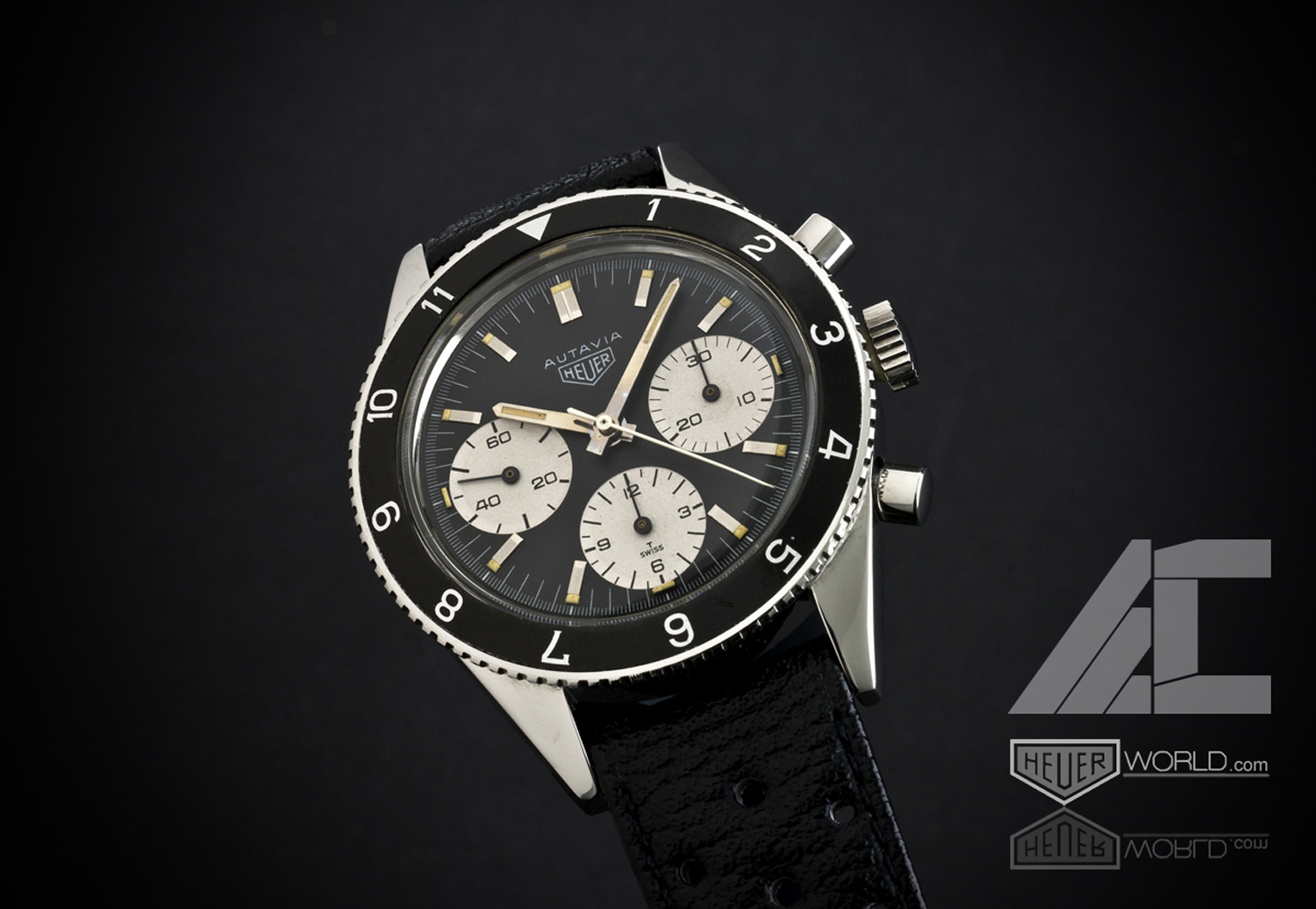Our vintage Heuer community has been online for over a decade now. We have assembled thousands of images, created reference tables covering hundreds of models, and written articles, blogs, books and forum postings covering the most intricate (and obscure) details of the vintage Heuers. Sometimes, we may convince ourselves that there is little remaining to be learned, in terms of cataloging the models that Heuer produced from the 1950s through the 1980s. Ironically, this abundance of information makes it all the more exciting when we discover a new version of a favorite watch.
In a discussion forum posting on April 20, 2014, Paul Gavin introduced and documented a newly-discovered version of the Autavia, from the mid-1960s, which he calls a “Transitional” Autavia Screw-Back Case. The posting below is based on Paul’s discussion forum posting, and we thank Paul for the insight and images that make this discovery so interesting.
Click on any of the images, to see a high resolution version.
Paul Gavin’s Discussion Forum Posting, April 20, 2014
The following watch was recently posted on a UK watch forum. At first glance it’s a 1st execution Autavia 2446. Right?
Wrong!
It’s actually a “new” discovery. Let me explain. The new part of the discovery is finding a 1st execution dial and dauphine hands in this particular case. The case in question is the not so “new” bit. This distinctive case, of which we have seen fewer than 20 samples, has actually been know about for some time but never really brought to the attention of the wider community. I call it the “Transitional” Autavia Screw Back Case.
The main distinguishing feature of this case is the lugs. The lugs are missing the bevelled edge that is a feature of both 1st and 2nd Autavia screw back cases. In addition to the distinctive lugs, the case features the wider bezel from the 1st execution case. In all examples I have seen, the bezel is the type 2 version with no lume triangle at the 12.
Here is a family portrait which identifies where this case (3rd from left) fits into the series:
First Discovered Two Years Ago
I learned about this case roughly two years ago, shortly after seeing one example come up for sale on ebay. At first I dismissed it as a fake case with correct dial, hands, bezel and movement. Soon after I realised the error of my ways when I was loaned the example in the image above by Abel Court. Abel’s knowledge of vintage Heuer goes beyond the obvious and when you have dismantled, serviced and restored as many vintage Heuer watches as he has, it’s no surprise that he was the one (as far as I know) to discover and authenticate this unusual and rarely seen Autavia screw back case.
Of all the examples I have seen most featured the 3rd execution 2446 dial and straight steel hands. But there have been others like the one above with the 1st execution dial as well as a 3rd execution 3646 with Valjoux 92. Here is yet another unusual example of this transitional case with a 3646 tachy dial:
Comparing the First Execution Case and the Transitional Case
Below is a visual comparison between a 1st execution Autavia (Ref 3646) and the “transitional” screw back Autavia case, with 3rd execution dial (ignore the replacement red central second hand). These cases seem to be identical in every dimension and detail except for the absence of the bevel on the transitional case.
The obvious questions arise as the where and how this case fits into the history of the Autavia range generally and the early screw back cases specifically. The best Heuer expert in the US (ex Heuer watchmaker) has no recollection of this case, which could be interpreted as this was a small run or design indecision when updating this model.
It is clear from the images above that the lugs are thick and the lack of a bevelled edge was not due to an over polish in later life. I would go as far as to say that it left the factory this way. And I will go even further to declare that this is a transitional Autavia screw back case that came after the 1st case/2nd dial and before the 2nd case/3rd dial (the “Rindt” Autavia). It may be obvious from the family portrait but the proof lies in the serial numbers.
The Serial Numbers Tell the Story
It is well know that there is no official record of Heuer serial numbers however, the watches produced certainly in the 1960’s and 1970’s with very few exceptions, all had serial numbers engraved on the case. Over time individual collectors (including myself) have built up a data base of serial numbers which paint a clear picture of when certain references and models started and finished. I have managed to compile a good sample of Autavia screw back case serial numbers and they paint a very interesting picture. Let me just say that this is not a complete record and there are and will always be some exceptions. The range of serial numbers I have are as follows:
First execution Case with first execution Dial
- 48360 – 49498
- 52240 – 53047
First execution Case with second execution Dial
- 53093 – 53409
- 59330 – 59793
Transitional Case
- 82848 – 83122
Second execution Case with third execution Dial
- 85128 – 86088
- 88220 – 90009
- 95284 – 97062
Second execution Case with GMT Dial
- 100012 – 100085
. . . and the Mystery Remains
The vintage Heuer knowledge base is extensive but from time to time new discoveries come to light that change the picture ever so slightly as in this instance. The significance of this transitional case alters the well know timeline of the screw back Autavia range. In my view it should be considered a transitional case simply because there is a small sample known and within that sample more than one dial has been found. Which brings the story right back to the beginning and the discovery of a 1st execution dial in this much later case. It was not possible to get the serial number of this example because it does not have one (or could not be found by the owner), however I can report that the movement was an early Ed Heuer signed Valjoux 72. The dauphine hands are 2nd execution Autavia so it is a real mixed bag. Sadly, the oral history of this piece is sketchy so we may never know if it was an early Autavia re-cased into this transitional model or whether Heuer (or some private watchmaker) was using up some old dials and movements during the run of transitional case. Nevertheless the sum of the parts makes for a very interesting piece that was the inspiration for this story and I look to seeing more of these that are out there shared with the community.
Below are some more images of this transitional case for you to enjoy.
Happy Easter
Regards
Paul
Additional Images of Transitional Autavias
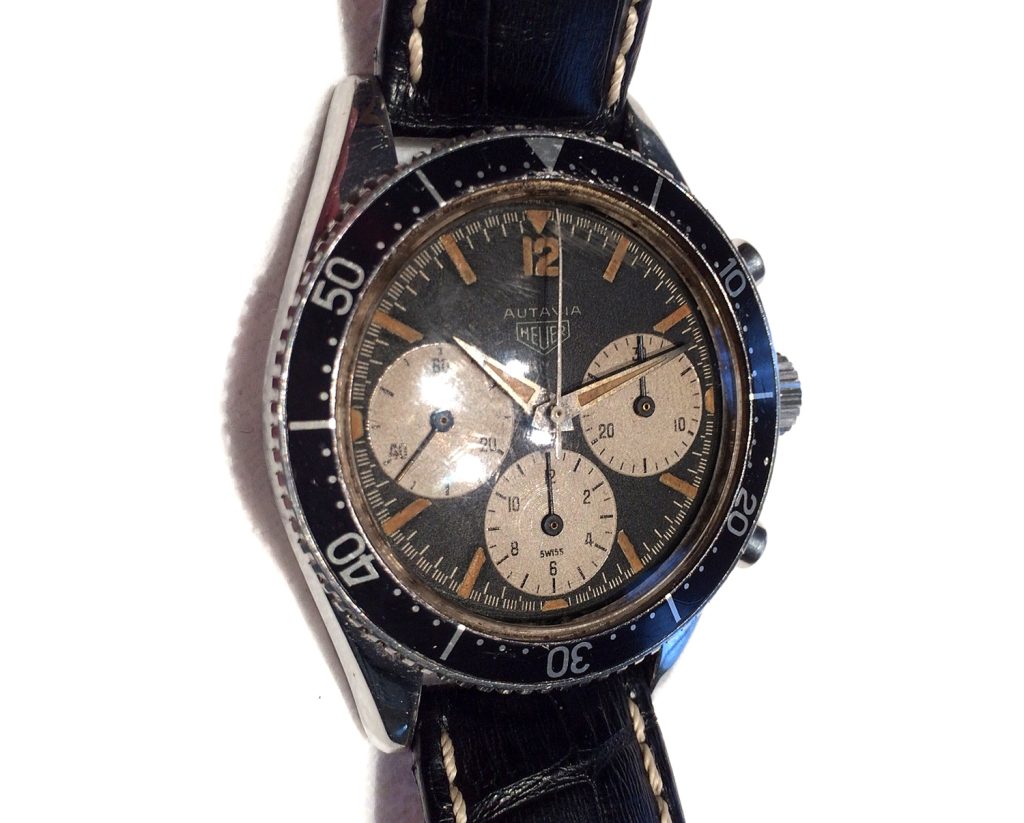
The four photos below are by Paul Gavin, and feature Abel Court’s amazing Transitional Autavia.
More Transitional Autavias
You can see more Transitional Autavias HERE. Coming soon, our review of a Transitional Autavia, after wearing it for a few days.
Special Thanks!
Special thanks to Abel Court for providing the Transitional Autavia featured in this posting, and to Paul Gavin, for taking the amazing photos of Abel’s watch and for writing the discussion forum posting describing his discovery. Be sure to visit Abel’s new website, HeuerTime.com, and you can see more of Paul’s photography on HeuerWorld.com.
Jeff Stein
May 7, 2014
